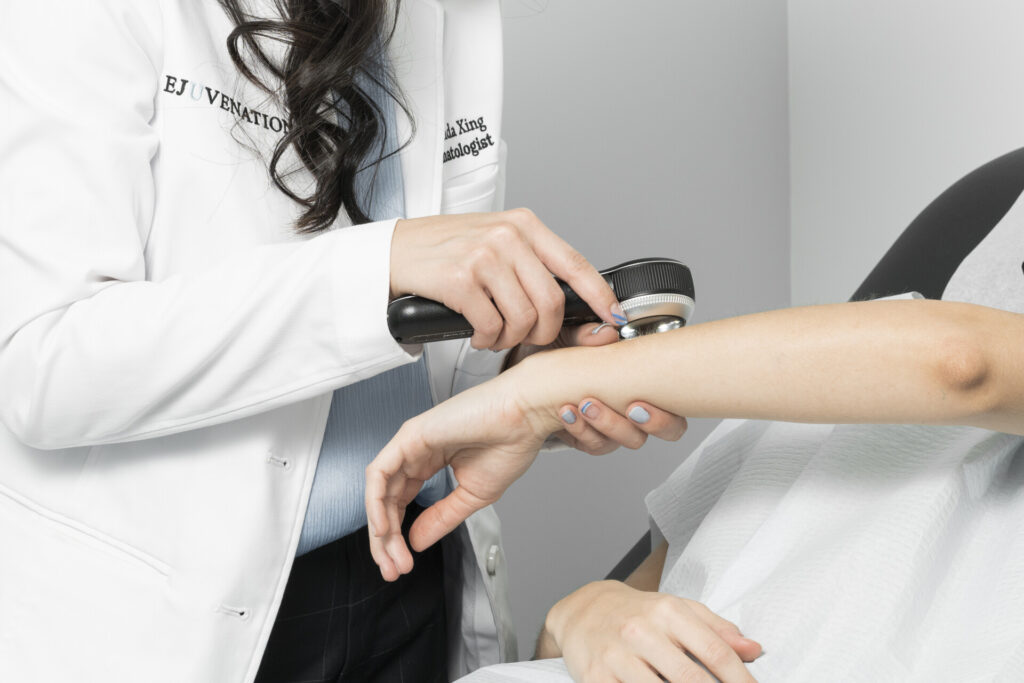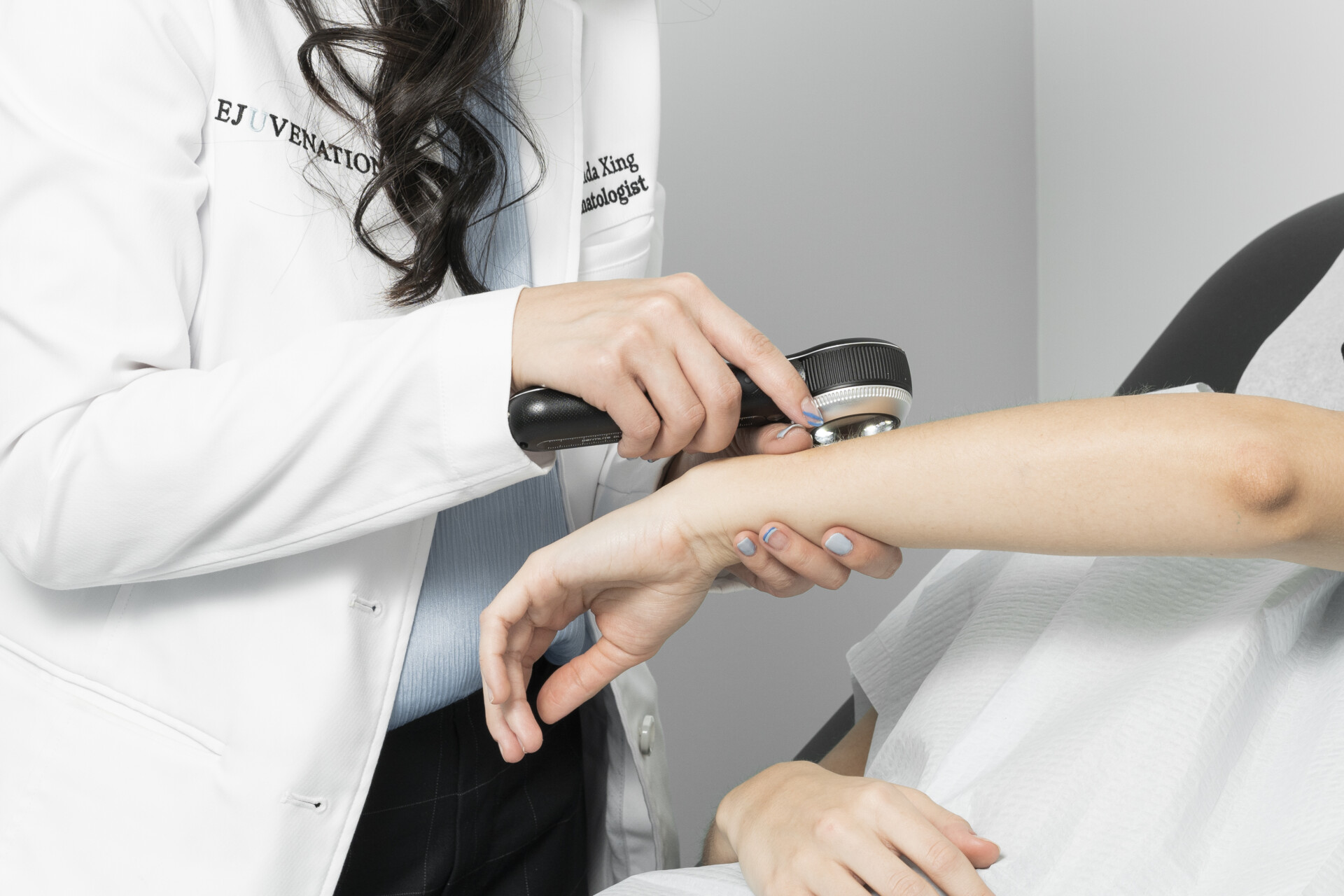As the bright sun lures us outdoors, it’s important to remember that May marks more than the arrival of spring—it’s also Melanoma Awareness Month. This time of year encourages us to not only enjoy the beauty around us but also to be vigilant about our skin health. Protecting ourselves from the sun’s UV rays is essential in preventing melanoma, the most severe type of skin cancer.
What is melanoma?
Melanoma is a type of skin cancer that originates in the cells that produce melanin, the pigment responsible for skin colour. It can develop anywhere on the body, including areas not typically exposed to the sun. While melanoma accounts for a small percentage of skin cancer cases, it is responsible for the majority of skin cancer deaths. Early detection and prevention are key to reducing the risk of melanoma and improving outcomes.

What does melanoma look like?
The appearance of melanoma skin cancer can vary widely. It often begins as an unusual mole anywhere on the skin. Typically, a mole is a harmless growth, small, round, or oval, and generally brown, tan, or pink in color. It may be either raised or flat, and most people have several.

The earliest indicator of melanoma is usually a change in a mole’s colour, size, or shape. These changes can occur in an existing mole or manifest as a new mole. It’s important to note that other health conditions may resemble melanoma.
To identify common signs and symptoms of melanoma, use the ABCDE rule.
How to check your skin: the ABCDEs of melanoma
Below is a simple way to remember what to look for during your skin checks, known as the ABCDEs of melanoma. Consult a doctor if you notice any of these changes on your skin:
- A for Asymmetry: One-half of a mole does not match the other.
- B for Border: The edges of a mole are irregular—jagged, notched, or blurry—with colour that may bleed into the surrounding area.
- C for Colour: A mole’s colour is uneven, possibly showing shades of tan, brown, black, or even blue, grey, red, pink, or white.
- D for Diameter: A mole that is larger than 6 mm across, roughly the size of a pencil eraser.
- E for Evolving: Any change in a mole’s colour, size, shape, or texture; the mole might itch, burn, or tingle.
Additional melanoma symptoms include:
- An area that doesn’t heal
- Moles or sores that ooze or bleed
- Ulcerated, broken skin
Performing a Self-Exam
Establishing a monthly skin check routine is a vital health practice that can help detect early signs of skin cancer, including melanoma. To perform a thorough and effective examination, follow these steps:
- Choose a Well-Lit Room: Ensure your room has good lighting, preferably natural light, which provides the best visibility for examining your skin.
- Use a Full-Length Mirror: Stand in front of a full-length mirror to get a clear view of your entire body. Use a hand-held mirror to check areas that are hard to see, such as the back of your thighs or your scalp.
- Check Your Entire Body: Begin at your head and work your way down. Examine your face, ears, neck, chest, and belly. Women should lift their breasts to view the underside. Check your underarms, arms, tops and palms of your hands, between your fingers, and under your fingernails.
- Sit Down for a Lower Body Check: Sit down to examine your legs, the tops and soles of your feet, between your toes, and under your toenails. Don’t forget to look at the backs of your legs and feet with the help of a hand-held mirror.
- Record and Track Changes: Keep a log of your findings, noting any new spots or changes in the colour, size, or shape of existing moles. Photographs can be helpful for tracking changes over time.
- Consult a Professional Dermatologist: If you notice any changes or new growths that seem unusual, schedule an appointment with a dermatologist for a professional evaluation.
Regular skin examinations can help detect and treat potential skin cancers early when they are most manageable.

What if a suspicious spot or mole is found?
See a dermatologist or family doctor as soon as possible to have the lesion examined. A skin biopsy under local anesthesia may be needed. A pathologist will then examine the sample.

What if melanoma is found?
If a biopsy confirms melanoma, further surgery may be required to remove a margin around the affected area, ensuring all cancerous cells are excised. Your dermatologist will provide further details on your specific treatment plan.
Treatment Options
Skin cancer varies in type and severity, requiring customized treatments determined by a dermatologist’s detailed examination and diagnosis.
Skin Lesion and Cancer Excisions
Our surgical procedures are designed to remove suspicious or cancerous skin lesions effectively, prioritizing your health and aesthetic outcomes.
If you’re concerned about a potentially cancerous skin spot, consider Mohs Micrographic Surgery. This technique for analyzing and removing tissue has effectively treated visible cancer areas for over 15 years with great success.
For more information, we encourage you to consult our medical staff.







